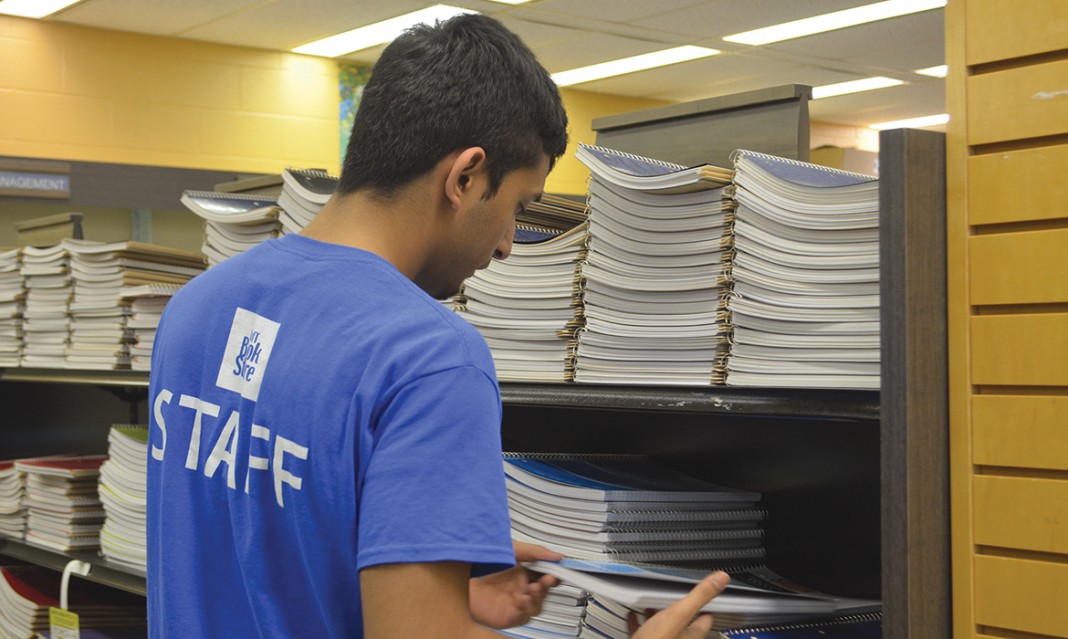The thought of completing an undergraduate degree in more than four or five years sounds ludicrous to the majority of us. Every year we resume our countdown to the time when we finally either enter the workforce or continue to a postgraduate program. As a result, we don’t typically consider part-time studies as an option. Why would someone choose to take more time to complete their degree?
In fact, most part-time students begin their degree as a full-time student. They start university in the hope of finishing in the same amount of time it took to get through high school—that is, until they’re faced with unexpected obstacles.
“I began as a full-time student,” says Andrew Nablo, a fifth-year history and religion major and part-time student. “I didn’t have the discipline for it. Part-time is the only way I can handle it. I take three courses at a time and I can’t do a proper job doing more than that.
“This way it also gives me more time to do things,” he adds. “I work two full days a week. It’s a matter of necessity.”
For some other part-timers, it’s a matter of affordability. They realize that they can’t survive financially by just working in the summer and/or taking OSAP and that they need to work during the school year as well.
“I work part-time to cover the cost of my studies. Even though I work in residence and this covers my housing, I still need multiple jobs off campus to cover the cost of tuition, even with OSAP,” says Emily Tabbert, a fourth-year part-time linguistics major.
Some part-time students also have children to support, the subject of another feature published a few weeks ago (“The secret life of student parents”). Others have to pay for rent and that, along with school, proves too costly for them to work a manageable number of hours along with school.
Amir Moazzami, UTMSU’s VP part-time studies, points out that many part-time students are mature students who have a variety of reasons for coming back to school.
“That includes recent immigrants attempting to integrate university studies with life in a new country, single- and two-parent families balancing employment, study, and childcare, and students with disabilities taking on a new challenge,” he says.
The official definition of a part-time student is someone who’s enrolled in 2.5 or fewer credits over the fall and winter terms or 1.0 over the summer terms. With midterms upon us, 2.5 credits sounds pretty ideal right now.
But there are downsides of studying part-time, too. Part-time students receive less OSAP funding and often have fewer course options and office hour opportunities because of their other obligations.
“The selection is absolutely awful,” Nablo agrees. “You take an interesting course once a year because the others don’t fit in your schedule. Or maybe you have to take it at 8 a.m. on a Monday.”
The experience that full-time students might take for granted can be diminished for part-timers. “Being part-time is a pain in the ass,” says Nablo. “With this campus especially, it’s socially dead. Unless you’re here all the time, it’s easy to be alienated. I’ve been here six to seven years and no improvement so far.”
Moazzami believes these factors mean that part-time students are at a disadvantage in their university education.
“There are some limitations to access to services,” he says. “Students face a constant struggle getting through university. Increased fees, insufficient child and family care, reduced numbers of evening and summer courses, offices that close at 5 p.m. and the lack of student aid are making it more difficult to get a degree part-time.”
Part-time students only recently got access to the U-Pass.
Chances are many full-time students don’t realize the struggle that many part-time students face in order to attend school. In some cases it’s an option that just allows you to slow down and take university at a more leisurely pace—but many part-time students are hardly doing it by choice, and face at least as much pressure as full-time students.



